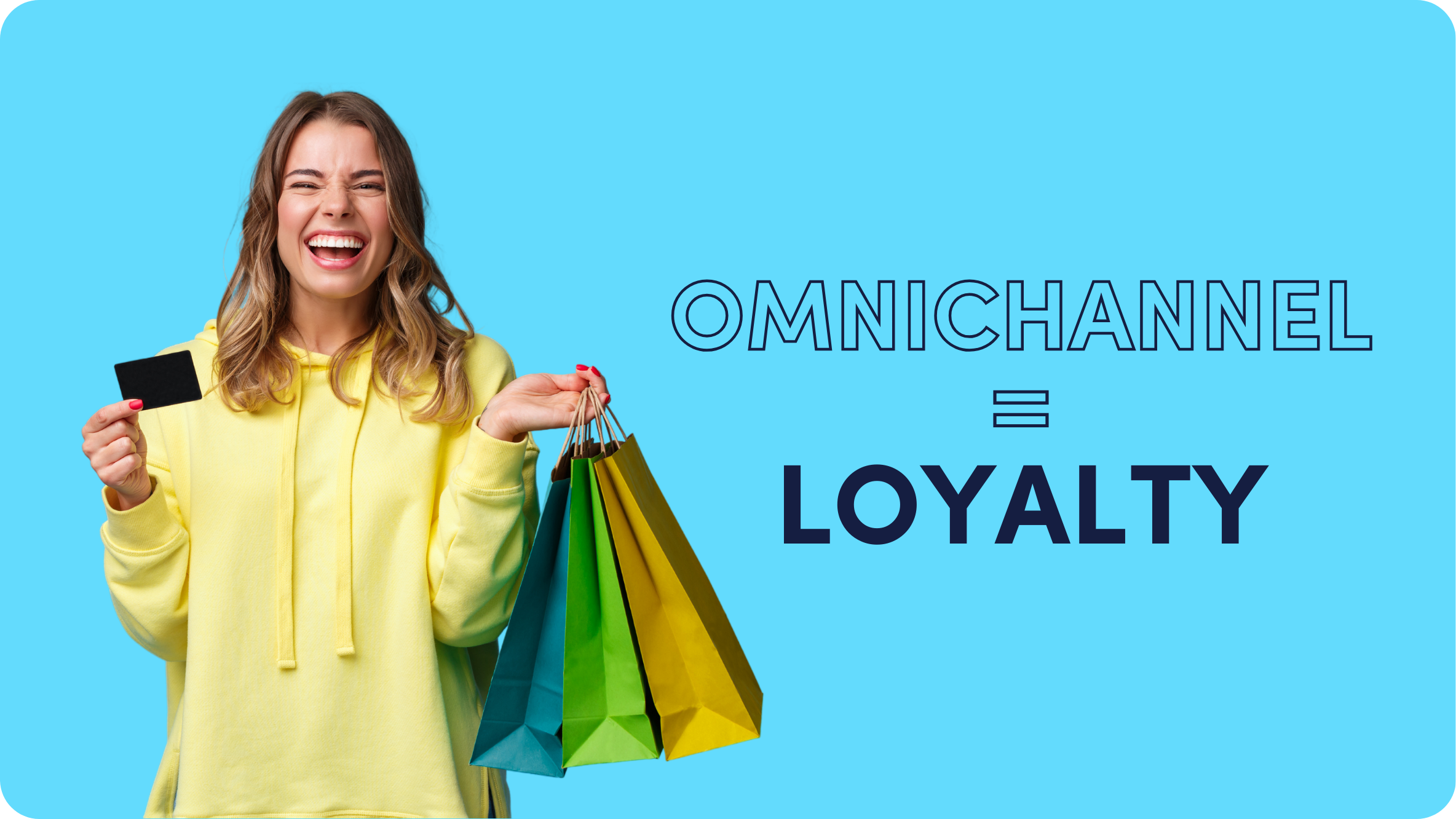Interview with Jonas Olausson: Growing a Profitable Native Ad Agency

Jonas Olausson is the founder of Joinative, a native advertising agency and SaaS. He has managed the creation of 100+ native ad campaigns and has delivered 100K+ leads to his clients for the last few years.
After he has counted the number of hours he spent on native ad campaign reporting and analysis daily, weekly, and monthly, Jonas came up with the idea of Native Pro – the reporting and optimization tool for Taboola and Outbrain.
And here’s what Jonas told us about his business, the challenges of managing clients’ campaigns, and relationships with Outbrain.
Q: Tell us a few words about Joinative.
First of all, Joinative is a native advertising agency. Also, we offer consultancy and audit services – in case a person or a company experiences challenges with managing their native ads, we help them identify problems, provide workable solutions, and train their teams to build more effective campaigns. For brands that have been successfully investing in native and just want to find ways to optimize their workflows, we have a few products to offer.
In a nutshell, Joinative is a company that can help almost anyone interested in native – from newbies that need training to experts that require sophisticated solutions and tools.
Q: It seems that Joinative is one of a few agencies that build its services around native advertising. Why did you decide to focus on it solely?
A few years ago, I noticed that more and more brands started to pay their attention to native advertising, but there was one problem – there were very few experts that could help them.
Of course, advertisers can always rely on account managers provided by Outbrain or other platforms. But what if you want to entrust your campaigns to some external agency and receive customized performance reports? You’ll notice that digital marketing agencies rarely list native advertising among other services being offered (spoiler alert: now we partner with quite a few agencies that want to do native advertising for their clients but don’t have enough resources for this). In many cases, companies would just find a freelancer to work with.
This is how the idea of building a company around native advertising was born – I saw the demand and decided to fill it.
Q: What was it like to manage a newly-built native advertising agency in the pandemic outbreak?
It’s definitely not the easiest thing to do.
Soon after we optimized our workflows, updated a website, and started seeing leads coming in, the lockdown was announced. Everybody understood that companies would decrease or even completely cut their investments in advertising. Moreover, the chances someone would decide to test out a new advertising channel were little.
However, we haven’t seen any serious consequences as a newly-built company. We saw slower growth than we’d expected it to be at the beginning of the year, but we weren’t suffering. Here’s why.
First of all, we hadn’t built a large operational setup yet, and losing a few projects wasn’t a huge setback for us.
Also, when the first shock passed (it took about two weeks), brands realized they couldn’t afford to keep completely silent. This was the right time to build an online presence and capture leads – and isn’t native advertising the best strategy for reaching these goals?
What’s even more interesting, companies started to consider native advertising as a more affordable alternative to paid social media. This has proved to be very effective in terms of reducing your budgets while still scaling your ad campaigns. One of our clients was so delighted with the results native advertising brought that they decided to shift a significant part of their Facebook ads budget to it.
So, along with challenges, the crisis brought some very interesting opportunities for us as a native ad agency.
Q: What’s the most challenging part of managing a fully remote native ad agency?
Communication.
Especially when it comes to discussing campaign performance and making adjustments to campaigns, you should always be descriptive and rather over-communicate than assume something is implied.
Even though different team members are responsible for specific campaigns, it’s crucial for everyone to be aware of what’s happening inside other projects. These insights will be useful for future campaigns, and you won’t need to go through unnecessary tests again when you know how this or another step worked previously. This might be obvious for teams working from one office where people usually have those little interactions that help everyone stay on the same page.
When you’re remote, you should make sure all your Slack chats take place in channels that your entire team has access to and that you have all your virtual task boards updated.
Q: Have your clients ever tried to switch to native advertising from paid social? How are performance metrics different for these channels?
Yes. As I’ve mentioned before, we have a great experience of gradually shifting paid social budgets on native advertising campaigns with one of our clients.
I should highlight that the company decided to take this step only after seeing native ads had been delivering great results for quite some time. I’ve yet to see someone switching to native from paid social without testing it out.
In this specific case, we managed to get as many leads as the client was getting on Facebook but for lower costs. But it’s not uncommon that leads that you drive with your native ad campaigns might be more expensive than the ones coming from Facebook. It pays off when you see the lead quality is actually higher on native. The number of visitors that convert after filling out a form on a landing page is usually higher than on Facebook. I think it’s related to the fact Facebook campaigns are usually over-optimized.
Q: Do you create campaign content on your side or work with assets your agency clients provide you with? Which flow is better?
It depends on whether a client has an in-house marketing team and what kind of campaigns they’ve been running internally.
It can be that they’ve never been running any paid campaigns before and have little understanding of how it all works – and it’s perfectly fine as we’re here to help them develop the right strategy and handle the whole thing for them.
Often, our clients provide us with landing pages (which are blog posts or typical transactional LPs) that we test and then find out that there’s a place for improving these assets.
Both approaches work for us, but I believe that assets developed specifically for native ad campaigns will always work better than the re-used ones. There’s a huge difference between native and other advertising channels, which is reflected in the way people interact with ads and landing pages.
Q: In your opinion, what is the key to establishing a long-term effective relationship with Outbrain?
Working closely with your Outbrain Rep is the first tip coming to my mind.
Every time you have some issues with ads approval or campaign tracking (which you’ll have on every ad platform), your Rep will take the hassle over and save your time. First, you might think that you don’t need any help – and you’re right, the Outbrain interface is quite intuitive – but you’ll be surprised with how well you can do when collaborating with the Rep.
They’ll point out things that you might have failed to notice or inform you of new features that will help you drive better performance.
For advertisers working with Outbrain’s DIY platform, it’s important to keep up to date with the new tools and features that Outbrain releases and use them to your advantage. For example, the new Conversion Bid Strategy tool automates the bid process by using machine learning to uncover online behavior patterns that lead to conversions. You can use this tool to automate your optimization towards specific conversion types that work best for you, so you can become much smarter at native advertising without extra effort.
Q: What goals do you recommend your clients to pursue with native? Have you defined the right mix of targeting and messaging that work best for the specific goals?
For most of our clients, native advertising performs exceptionally well for lead generation. By capturing high-quality leads that have the intention of continuing their relationship with the company, native makes a significant contribution to the whole sales funnel.
Yes, we’ve defined a few go-to strategies that we almost always start with, and that prove effective. I wouldn’t reveal everything here, as it’s a part of our value proposition, but I think I can share a few tips.
Speaking of messaging, for lead generation campaigns, it’s better to be more specific in your ad copies. I’m not a big fan of clickbait headlines (which are all over publishers’ websites) and believe that it’s a good approach if you want to spend your budget fast. The combination of an ad that sets the right expectations and a landing page containing a quiz or questionnaire as a lead magnet is what has delivered lots of great results for our clients so far. Articles that tell a story about a company or its product are also pretty productive.
In fact, you never know what strategy will work best for the specific business before you define several potentially effective approaches and test them out.
Whatever goals we set, we’ll start with broader targeting options, split campaigns by device types and locations, and then optimize on publisher-level as we’re getting more performance insights.
Q: How do you approach campaign tracking and reporting?
We keep building custom tracking and reporting solutions for our needs.
It all started with Native Pro – our tool for exporting reports from a few native ad platforms and customizing them with ready-made dashboards that we not only offer to other native ad experts but also use internally. When we realized that our custom solution improved our workflows significantly, we went on and started to build scripts and bots for every specific case.
Recently, I’ve created a bot that allows us to set trigger events and receive notifications every time these events occur. With it, we’re always on top of our clients’ campaign performance and get informed of arising issues promptly.
We’re planning to share these scripts in our Slack community for native ad professionals, so stay tuned.
Q: Speaking of reporting, it often takes longer to start delivering results with native advertising than with other channels. How long does it actually take to start seeing good results from native for new clients?
Right. It depends on how much companies are ready to invest in the early stages. It might seem that you can kick off with low budgets and start scaling once your campaigns bring the first positive results. It’s not likely to work for native advertising.
You need to build learnings and do a lot of testing before you create effective native ad campaigns. With a budget of $4,000 – $10,000 per month (which highly depends on your goal CPA), we’ll gain enough insights in the first weeks and bring campaigns to good performance in the first two months.
Still, there’s no versatile benchmark for every niche. For Blinkist, the condensed book reading app, it took a few months to see positive results on Outbrain, but it was worth the wait: 50% lower CPC and 11% higher LTV than social. Since then, they’ve been successfully doing native advertising for almost five years. And what if they’d given up in the first months? They’d keep being over-reliant on Facebook.
Q: Is it difficult to convince people to keep investing in native at the early stages when the performance goals are yet to be met?
It’s not easy. That’s why it’s crucial to inform your clients about this ‘peculiarity’ of native advertising before you launch your first campaigns.
In big companies, the decision-making process is too complex. You can’t just request to increase the budget on your next campaign. Well, you can, but you’ll be waiting for an answer for a few months.
Whether we work with large organizations or individuals, we always set clear expectations of what sums might be needed to get to good results. Then we split this budget into monthly parts with clear goals of how the performance should be developing. This approach allows us to see whether we’re moving in the right direction or there’s a need to adjust our strategy.
Q: Has it ever happened that your campaigns weren’t improving with time? What steps did you take to address this?
Yes, it has. As we saw the reasons behind these issues, we were taking different steps in every specific case.
Often, it’s enough to test new landing pages, adjust messaging, and/or revisit your audiences – are you reaching the right people?
Working closer with your account manager can also be a solution. If your campaign budget is too low, it’s very likely you’ll see better results after increasing your spending. Sometimes, it helps to switch to a different native ad platform.
Q: Does it happen that clients are not happy with the results they’re seeing from native? What are the reasons for this?
Clients are often concerned about the time it takes to bring their campaigns to high performance. And the more experience they have with other advertising channels that deliver fast results, like Facebook or Google, the more difficult it is to convince them to trust us.
Q: What kind of content tends to work for you?
As we mostly work with lead generation campaigns, here are a few of our top-performing combinations for landing pages:
- Landing pages with questionnaires. We offer to provide some estimates or share advice based on visitors’ answers to the questions listed. In return, we ask them to leave their contact information.
- Ebooks. Readers exploring publishers’ websites are open to educational content and don’t mind sharing their email addresses in order to get a comprehensive guide on a subject they’re interested in.
- Real-life stories with free trial offers. After learning about the positive experiences of people that have benefited from a promoted service or product, visitors feel more encouraged to test it out.
Q: What do you think is the most advantageous of Outbrain against their competitors? What do you like the most about Outbrain?
Outbrain’s big advantage is the high quality of its traffic and premium publishers. Though the publisher network is of a great standard, that doesn’t mean every publisher site is the right fit for every advertiser. We do exclude irrelevant sites when optimizing campaigns, but it never takes much time and effort like it does on some other platforms. This is a great time saver, leaving us with more time to focus on optimizing our clients’ campaigns in other ways. Luckily with Outbrain’s rich toolbox, there are many different targeting and optimization options to work with.
Also, working together with Outbrain reps is one of the best experiences – you know that any issues will be addressed.







![[Infographic] Which Ad Headlines and Images Catch Your Readers’ Attention?](https://www.outbrain.com/blog/wp-content/uploads/2024/01/ad-headlines-and-images-best-practices.png)



